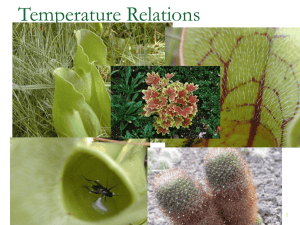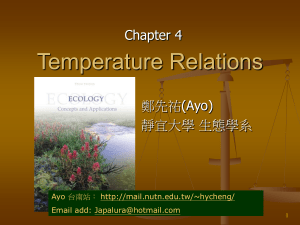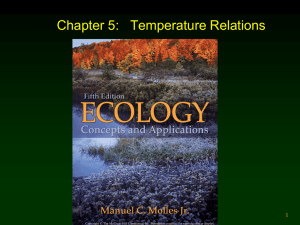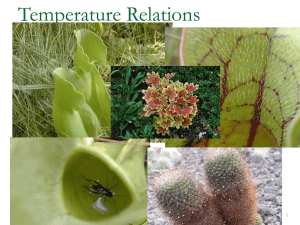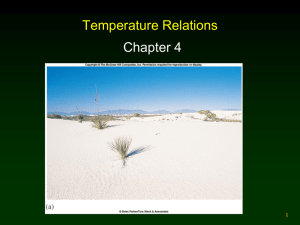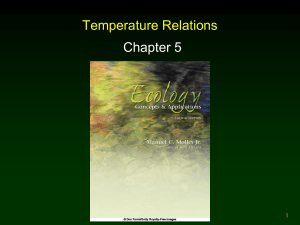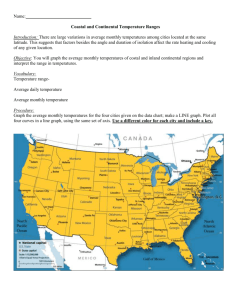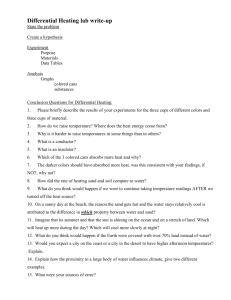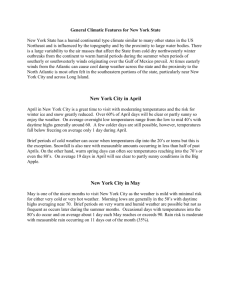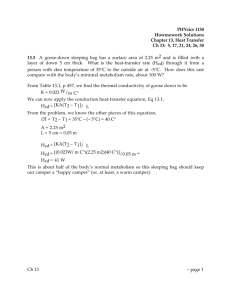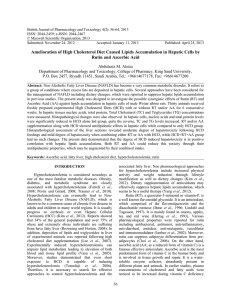Lec 04_Temp250_NotesC
advertisement
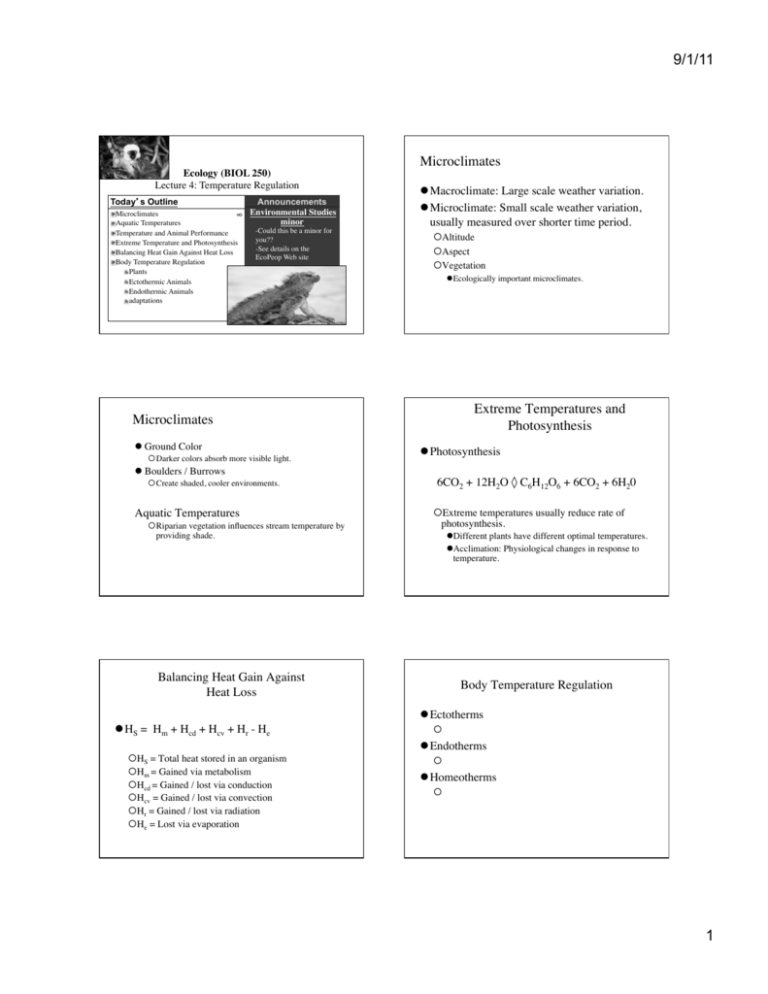
9/1/11 Ecology (BIOL 250) Lecture 4: Temperature Regulation Today s Outline Announcements ∞ Environmental Studies minor icroclimates M Aquatic Temperatures Temperature and Animal Performance Extreme Temperature and Photosynthesis Balancing Heat Gain Against Heat Loss Body Temperature Regulation Plants Ectothermic Animals Endothermic Animals adaptations -Could this be a minor for you?? -See details on the EcoPeop Web site Microclimates Macroclimate: Large scale weather variation. Microclimate: Small scale weather variation, usually measured over shorter time period. Altitude Aspect Vegetation Ecologically important microclimates. Extreme Temperatures and Photosynthesis Microclimates Ground Color Darker colors absorb more visible light. Photosynthesis Boulders / Burrows Create shaded, cooler environments. Aquatic Temperatures Riparian vegetation influences stream temperature by providing shade. 6CO2 + 12H2O ◊ C6H12O6 + 6CO2 + 6H20 Extreme temperatures usually reduce rate of photosynthesis. Different plants have different optimal temperatures. Acclimation: Physiological changes in response to temperature. Balancing Heat Gain Against Heat Loss HS = Hm + Hcd + Hcv + Hr - He HS = Total heat stored in an organism Hm = Gained via metabolism Hcd = Gained / lost via conduction Hcv = Gained / lost via convection Hr = Gained / lost via radiation He = Lost via evaporation Body Temperature Regulation Ectotherms Endotherms Homeotherms 1 9/1/11 Temperature Regulation by Plants Desert Plants: Must reduce heat storage. Hs = Hcd + Hcv + Hr To avoid heating, plants have (3) options: Decrease heating via conduction (Hcd). Increase convective cooling (Hcv). Reduce radiative heating (Hr). Temperature Regulation by Ectothermic Animals Temperature Regulation by Plants Arctic and Alpine Plants Two main options to stay warm: Increase radiative heating (Hr). Decrease Convective Cooling (Hcv). Temperature Regulation by Ectothermic Animals Grasshoppers Liolaemus Lizards Thrive in cold environments. Burrows Dark pigmentation Sun Basking Temperature Regulation by Endothermic Animals Thermoneutral zone is the range of environmental temperatures over which the metabolic rate of a homeothermic animal does not change. Some species can adjust for radiative heating by varying intensity of pigmentation during development. Temperature Regulation by Endothermic Animals Swimming Muscles of Large Marine Fish Lateral swimming muscles of many fish (Mackerel, Sharks, Tuna) are well supplied with blood vessels that function as countercurrent heat-exchangers. Keep body temperature above that of surrounding water. 2 9/1/11 Temperature Regulation by Heterothermic Animals Warming Insect Flight Muscles Bumblebees maintain temperature of thorax between 30o and 37o C regardless of air temperature. Sphinx moths (Manduca sexta) increase thoracic temperature due to flight activity. Thermoregulates by transferring heat from the thorax to the abdomen Eastern Skunk Cabbage (Symplocarpus foetidus) Surviving Extreme Temperatures Inactivity Seek shelter during extreme periods. Reducing Metabolic Rate Hummingbirds enter a state of torpor when food is scarce and night temps are extreme. Hibernation - Winter Eastern Skunk Cabbage (Symplocarpus foetidus) 3
